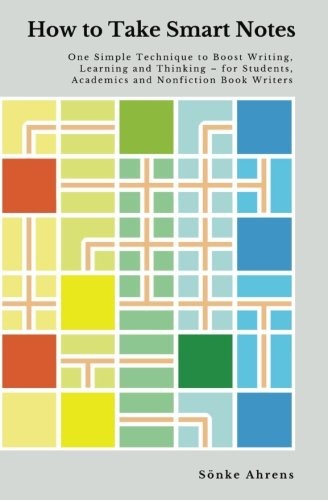OragePika commented on How to Take Smart Notes by Sönke Ahrens
看到了第11章开头。
A bit disappointing.
I have been testing diesen zettel for some time now, but in the end it just becomes too cumbersome and counterproductive to keep up with as many many other study-guide/note-taking techniques.
The core concept is the same as many other ones: take notes actively, read actively.
But here is the thing: for different reading materials activeness is defined differently.
For novels/stories/literature related stuff I found the best method that works for me is to annotate physical right next to the text. And often I would have way too many notations that the text would become hardly readable and I would often have to buy a second copy.
For math and physics related stuff, activeness means copy all the axioms and proofs by hand.
And the tiny little German cards are just too tiny to squeeze in all the information I want to squeeze in.
I think …
看到了第11章开头。
A bit disappointing.
I have been testing diesen zettel for some time now, but in the end it just becomes too cumbersome and counterproductive to keep up with as many many other study-guide/note-taking techniques.
The core concept is the same as many other ones: take notes actively, read actively.
But here is the thing: for different reading materials activeness is defined differently.
For novels/stories/literature related stuff I found the best method that works for me is to annotate physical right next to the text. And often I would have way too many notations that the text would become hardly readable and I would often have to buy a second copy.
For math and physics related stuff, activeness means copy all the axioms and proofs by hand.
And the tiny little German cards are just too tiny to squeeze in all the information I want to squeeze in.
I think in the end I am going to stick with my traditional A4 note taking and by the end of every chapter a little a5 résumé style.

